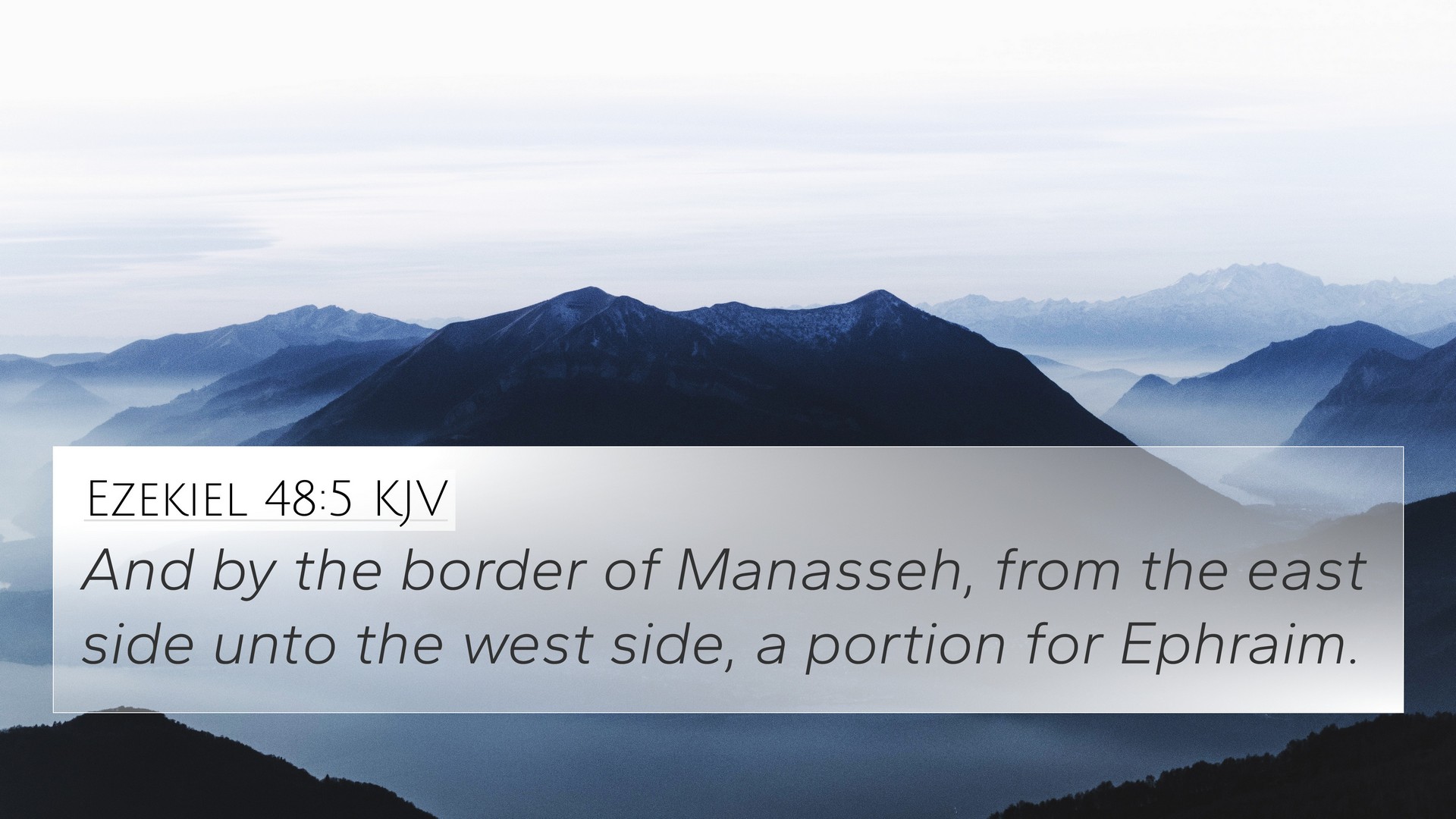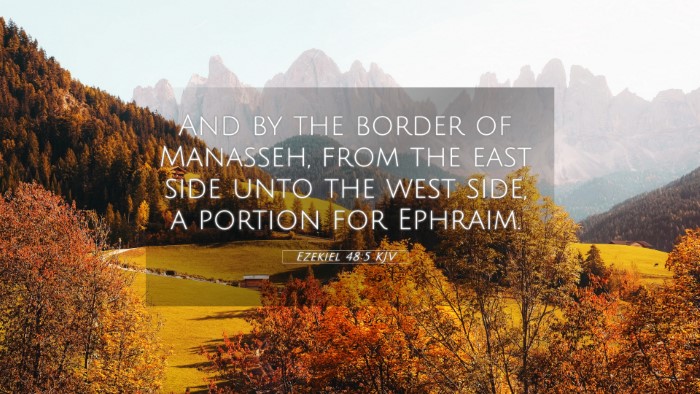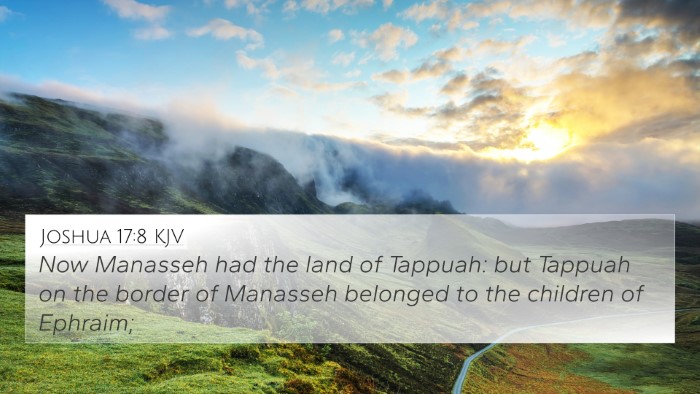Ezekiel 48:5 - Summary of Meaning and Interpretations
Ezekiel 48:5 states, "And by the border of Dan, from the east side unto the west side, a portion for Asher, one portion; and by the border of Asher, from the east side even unto the west side, Gad a portion." This verse is part of Ezekiel's vision of the restored Israel, particularly focusing on the division of the land among the tribes of Israel.
Historical Context
This passage occurs in a prophetic context where Ezekiel outlines the allocation of land to the twelve tribes of Israel in the anticipated restoration after Babylonian exile. The prophet received these visions to give hope to the exiled community by demonstrating God's plans for their future, showcasing a renewed and restored nation.
Verse Analysis and Interpretations
The verses surrounding Ezekiel 48:5 detail the geographical inheritance of the tribes. The significance can be understood through a comparative analysis based on insights from various public domain commentaries:
-
Matthew Henry:
Henry emphasizes the orderly distribution of land as indicative of God's justice and providence. Each tribe of Israel was allotted a specific portion, thereby reflecting God's attention to the needs of each tribe.
-
Albert Barnes:
Barnes points out the importance of territorial boundaries in establishing identity and possession. This allocation serves to unite the tribes under the covenantal relationship with God, reiterating the promise made to the patriarchs.
-
Adam Clarke:
Clarke examines the spiritual implications of this land division, suggesting that it represents a portion of God's favor. He posits that the names of the tribes and their placements symbolize divine order in worship and community life.
Thematic Bible Verse Connections
To enhance understanding of Ezekiel 48:5, we can explore the connections between Bible verses that relate to the themes of land distribution, tribal identity, and God's covenant:
- Numbers 34:1-12: This passage outlines the original borders of the Promised Land, serving as a foundation for understanding the allocations presented in Ezekiel.
- Joshua 14-21: Descriptions of the land inheritances given to the tribes provide a historical precedent for Ezekiel's vision.
- Revelation 21:12: The New Jerusalem's gates named after the tribes echo the theme of identity and belonging to God's chosen people.
- Jeremiah 31:1: God's gathering of His people and giving them a lasting inheritance resonates with the promises made in Ezekiel.
- Matthew 19:28: Jesus includes the apostles' role in a renewed creation, reflecting the ongoing theme of inheritance for God's people.
- Romans 8:17: Believers are described as heirs of God, emphasizing the spiritual inheritance tied to the physical land described in Ezekiel.
- Hebrews 11:8-10: This passage highlights faith in God's promises of inheritance, connecting Old Testament themes with New Testament realization.
Bible Cross-Reference Guide
Utilizing a cross-reference system enhances your study of scriptures. Below are various tools and methods for effective Bible cross-referencing:
- Bible Concordance: A helpful resource for finding specific terms and their occurrences throughout scripture.
- Bible Cross-Reference Guide: Documents that layout connections between verses, making it easier to see relationships.
- Cross-Reference Bible Study: A method that involves comparing verses to better understand biblical themes.
- Comprehensive Bible Cross-Reference Materials: Various publications that compile extensive cross-references for in-depth study.
- Bible Reference Resources: Online platforms or software that provide scripture connections.
Conclusion
In conclusion, Ezekiel 48:5 expresses both the promise of restoration for Israel and the strategic work of God to maintain order and identity among His people. Through a combination of prophetic vision and practical allocation of land, it underlines the ongoing theme of inheritance that spans across both the Old and New Testaments. Utilizing tools for Bible cross-referencing allows believers to deepen their understanding of scripture and see the interconnectedness of God's message throughout history.





